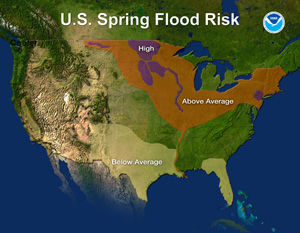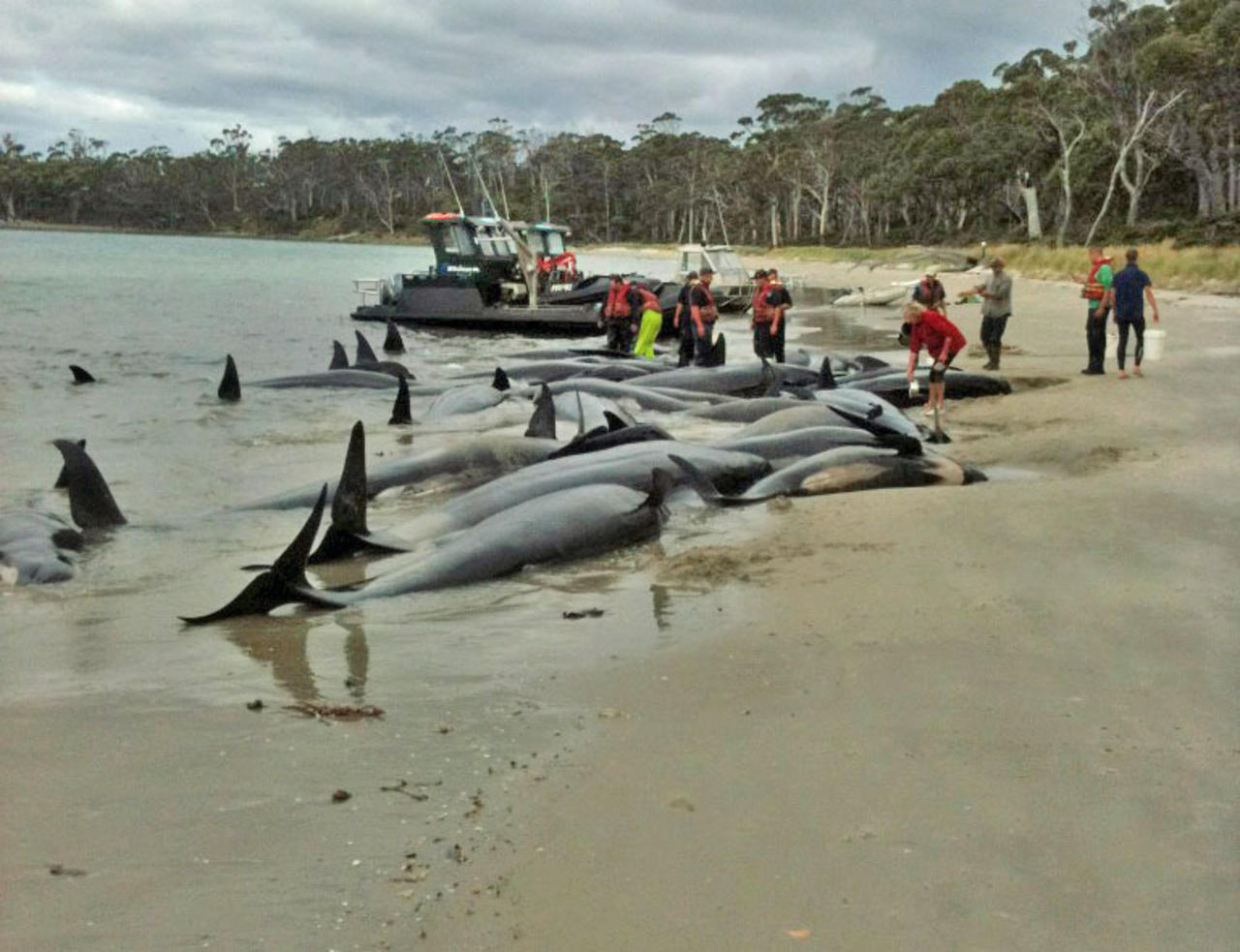
U.S. Spring Flood Risk Map for 2011.
With spring flooding already underway over portions of the U.S., NOAA forecasters are warning the worst is yet to come. Almost half the country - from the North Central U.S. through the Midwest and the Northeast - has an above-average risk of flooding over the next few weeks, according to the annual
spring outlook released today by NOAA's National Weather Service. This week is also national Flood Safety Awareness Week, and NOAA has partnered with FEMA to encourage residents to prepare for this imminent threat.
The highest spring flood risk areas include the Red River of the North, which forms the state line between eastern North Dakota and northwest Minnesota, the Milk River in eastern Montana, the James and Big Sioux Rivers in South Dakota, the Minnesota River, the upper Mississippi River basin from Minneapolis southward to St. Louis, and a portion of lower New York, eastern Pennsylvania and northern New Jersey. Many metropolitan areas have a greater than 95 percent chance of major flooding, including Fargo, Grand Forks, St. Paul, Davenport, Rock Island, Sioux Falls and Huron. Devils Lake in North Dakota has an 80 percent chance of reaching two feet above last year's record of 1452.1 feet.
"For the third consecutive year, the stage is set for potential widespread, record flooding in the North Central United States," said Jack Hayes, Ph.D., director of NOAA's National Weather Service. "We've been coordinating with federal and state partners and high risk communities since December to raise awareness and help them prepare. All the ingredients are in place for major flooding so this situation should be taken very seriously. We're asking citizens to stay informed and be prepared."

Comment: If people in the California area are not awake enough to take these VERY strong indicators that the West Coast of the USA is next in line for a major quake then what can ANYONE do to help them?